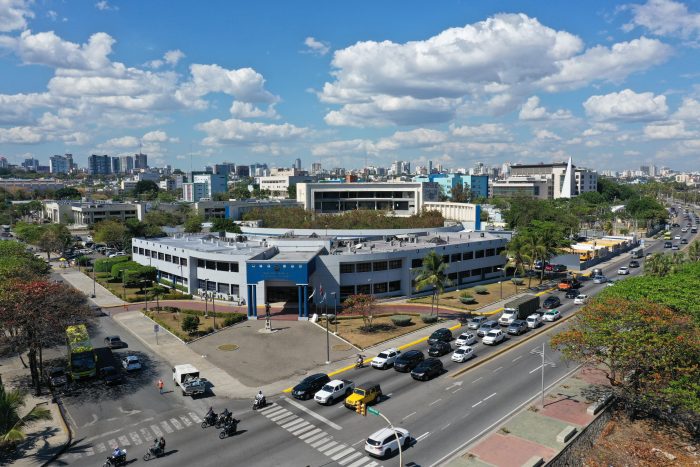General Directorate of Migration of the Dominican Republic

The General Directorate of Migration of the Dominican Republic, is the governmental body called to exercise the legal safeguard of the sovereignty of our territory through immigration control, compliance with the rules regarding the entry and exit of Dominican and foreign citizens, as well as the registration and regularization of the permanence in the national territory of those persons who meet the corresponding legal conditions according to the nature of their admission in the light of the law.
The immigration regime in the Dominican Republic did not have an institutional expression for almost a century after the advent of the independence of the Republic, since, the treatment of the subject generally maintained a normative regime based on the same constitutional norm. Although Article 109 of our first constitution creates four ministries, including that of Interior and Police, the truth is that it did not have clearly defined powers in the immigration field, but the constituent no longer understood the importance of a regime of foreigners that would serve as a basis for the consolidation of the newborn identity and played at its high level, in articles 7 to 13, together with the nationality regime, central aspects such as a total opening to immigration by conceiving that all foreigners not belonging to an enemy nation would be admitted to the territory of the Republic if they professed any useful art, science or industry, to the enjoyment of civil rights; guaranteeing their safeguard under the national honor since they stepped on the Dominican territory, as well as the enjoyment of the protection granted to their person and property if they adhered to national laws; conceiving then one of our first positive discrimination laws by putting an additional burden of time on the citizens of the nation from which we are emancipated, with the obvious objective of increasing the population, consolidating independence and avoiding the configuration of an ethnic minority that He will threaten her. (Articles 12 and 13).
It was then that Decree No. 1-65, in its Article 1, makes the Directorate an agency attached to the Ministry of Interior and Police.
Without fear of being wrong, the first major legislative effort aimed at the creation of a national immigration and immigration control system is the General Migration Law No. 95 of April 14, 1939 and its Implementing Regulation of 12 May of the same year, which among its many provisions, put in charge of a new General Directorate of Migration the responsibility of becoming the governing body of immigration and immigration control, just 75 years ago. (Article 12).
This Law, with just 17 articles, covered all the central issues of the immigration issue, namely: the requirements for temporary admission, the conditions determining the status of nonimmigrant, residence permits, reentry and temporary status, regime of Denial of the right of entry, sanctions, deportation and regulations regarding the entry of ships and civil aircrafts, among other relevant provisions.
Later, in 1948, Law No. 1683 on Naturalization was issued, modified in the aspect of Privileged Naturalizations (Art. 18) by Law No. 46 of that same year. This completes the legislative park, which, on an adjective basis, regulated the immigration regime in more detail in general.
Until 2004 the products in the field of immigration legislation were many and of diverse themes. At the same time, gradually, the country became the compromise of a substantive multiplicity of international conventions, conventions and pacts, so that its legislation was evolving as the system of international norms and guidelines on this important subject was improved and perfected.
In this regard, of particular interest are the agreements signed with the International Labor Organization (ILO) concerning matters of an eminently humanitarian nature, such as the age of admission of minors in agricultural activities, national treatment of foreign workers , forced or compulsory labor, labor inspection regimes in the industrial and commercial sectors, wage protection, equal remuneration for both sexes and discrimination in respect of employment and occupation, among others.
The legal framework, before 2000, was enriched with other legal devices of great relevance for the consolidation of a modern migratory legal framework. Note the Law No. 16-92 that creates the Labor Code, which regulates the participation of foreigners in the labor market; Law No. 344-98 that sanctions the illegal trafficking of persons; the Law and the provisions of Decree No. 1569 of November 15, 1983, which creates and integrates the National Commission for Refugees and its Regulation No. 2330, of September 10, 1984, as well as the Foreign Investment Law and its regulation, which establish migratory categories for the stimulation of said type of investment.
The new legislative initiatives took place in a context of reform and modernization of the Dominican State in all its key functional compartments,The promulgation of the General Migration Law No. 285-04 of August 15, 2004 and the approval of its Application Regulations contained in Decree no. 631-11), constituted not only the second major legislative effort with a systemic objective of ordering, modernization and organization of institutionality in the area of migratory affairs, but, being the culmination of a dilated and sinuous dynamic, they turned out to be a profound value, together with a first great effort to tune the norm and practice, in the configuration of a new culture within the framework of a new Dominican Migration Law. “

